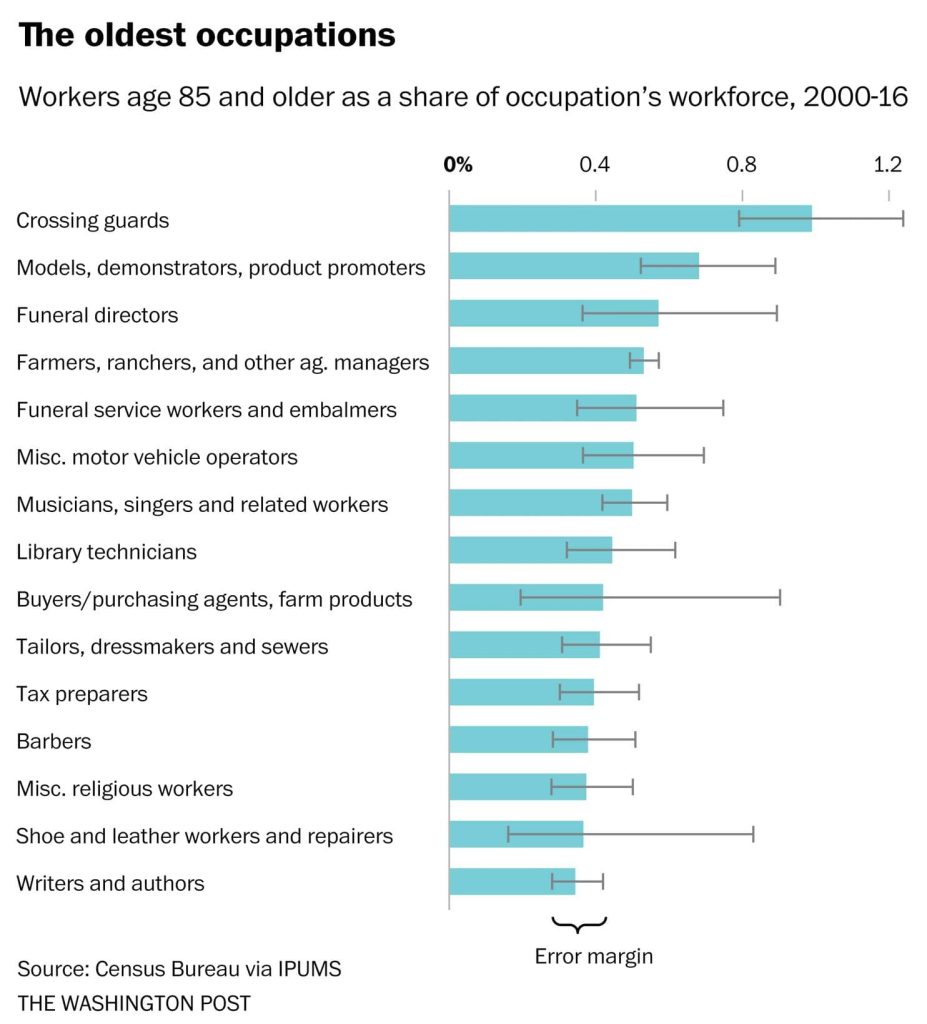 Seventy may be the new 60, and 80 may be the new 70, but 85 is still fairly old to be in the workforce. But according to U.S. Labor Department data, the era of older workers has arrived.
Seventy may be the new 60, and 80 may be the new 70, but 85 is still fairly old to be in the workforce. But according to U.S. Labor Department data, the era of older workers has arrived.
Overall, 255,000 Americans 85 years old or older held jobs in the U.S. economy during the past year. That’s 4.4% of Americans within that age group, up from 2.6 percent in 2006. In fact, it’s the highest number on record in our country.
Those workers are doing all kinds of jobs—working as crossing guards, farmers and ranchers, and even truckers. Indeed, there are between 1,000 and 3,000 U.S. truckers age 85 or older, according to 2016 Census Bureau figures. Their numbers have roughly doubled following the Great Recession.
In many ways, America’s aging workforce has shaped the character of the post-Great Recession labor market. Baby boomers and their parents are working longer as life expectancies increase, retirement plans decrease, education levels rise and work becomes less physically demanding. Labor Department statistics indicate that at every year of age above 55, U.S. residents are working at the highest rates on record.
Interestingly, at the opposite end of the age curve, we see a reverse situation. Workers under the age of 30 are staying on the sidelines at rates we haven’t since the 1960s and ’70s when women weren’t yet entering the workforce at the level they are today.
Workers age 85 and older are much more likely to be found in less physical industries like management and sales; they are exceedingly rare in demanding ones like manufacturing and construction.
Moreover, older workers can make a huge impact. Indeed, some of America’s most prominent workers are around 85. The oldest Supreme Court justice, Ruth Bader Ginsburg, is 85. Rupert Murdoch is 87. So are George Soros, Warren Buffett, and Toni Morrison.
For a more granular picture, we can look at the specific occupations where any given worker is most likely to be in the 85-plus group. To enable detailed analysis of such a small population, the New York Times assembled census data from 2001 to 2016.
Crossing guards are relatively likely to be age 85 or above. The same goes for musicians, anyone who works in a funeral home, and product demonstrators like those you might find at a warehouse club store.
But that chart tells only half the story. Few people of any age get the opportunity to work as crossing guards, funeral directors, or musicians. So, while they may be elderly-friendly jobs, they’re not the top jobs for older people.
By sheer numbers, the top job among the 85-plus-year-olds is farmers and ranchers. It’s also the one in which the distribution of older workers is most different from the distribution of the rest of the population. That category, which is distinct from farm laborers, houses 3.5 percent of the oldest workers—but just 0.5 percent of the rest of the population.





